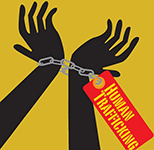 Four times each year, we as a Council step away from the office, the phone, email and the work we are attending to. We take a day and typically retreat to Kiser Lake, that lovely space in God’s creation that we are truly blessed to have. We give ourselves to some reading, some reflecting and some dialogue. For me the day is a time to catch my breath, to enjoy nature and to recharge my spiritual core.
Four times each year, we as a Council step away from the office, the phone, email and the work we are attending to. We take a day and typically retreat to Kiser Lake, that lovely space in God’s creation that we are truly blessed to have. We give ourselves to some reading, some reflecting and some dialogue. For me the day is a time to catch my breath, to enjoy nature and to recharge my spiritual core.
Our most recent retreat day called us to a different type of experience. Prior to our day together we read a chapter titled “Love” from Krista Tippett’s most recent book, Becoming Wise: An Inquiry into the Mystery and Art of Living from Penguin Random House. Instead of traveling to Kiser Lake, we journeyed to Cincinnati. Before arriving at the National Underground Railroad Freedom Center in downtown Cincinnati, our final destination for the day, we stopped to engage in contemplative dialogue on the chapter we read from Tippett’s book.
For me, the chapter from Tippett’s book and our dialogue cleared my head of thoughts and baggage that were not necessary for the day. I was able to enter the Freedom Center equipped with a fresh canvas on which to collect images and words that would paint a dark portrait of 21st century human bondage and cruelty whose roots run deep and become intertwined with the human bondage and cruelty of our pre-Civil War history. These two sad realities are separated by centuries, yet rooted in the same soil of consumeristic greed and power.
It is easy to cast an accusing eye toward the southern U.S. states where buying, selling and abusing human beings became an acceptable way of life. However, the demand for the goods produced through the suffering of our black sisters and brothers was created by a much broader population that encompassed not only the southern and northern U.S. but expanded to our European neighbors.
Slavery did not die with the Civil War! Human trafficking is occurring at every moment of every day in countries around the world including the United States. Human beings, including children and the most vulnerable, are kidnapped or coerced into slavery. This modern-day slavery knows no age or gender limits and is not limited to any one race or ethnic background. This modern-day slavery is driven by consumeristic greed and desire for power. This modern-day slavery controls its victims with psychological, emotional, sexual and physical abuse.
As dark as this portrait is, there are peeks of light that are piercing the gloom. Organizations around the globe are acting as the conductors on a modern-day Underground Railroad extending lifelines of hope to victims. The light gets brighter with every person that is ushered out of bondage. The hope comes in spreading awareness of this issue. Hope comes when one more person or family consciously chooses to purchase fair trade or ethically produced products. Hope comes when one more person or institution chooses to invest in ethically responsible companies. Hope comes when we do not allow ourselves to be caught up in what Buddhist anthropologist and teacher Roshi Joan Hailfax calls “pathological empathy.” Buddhist psychology holds the notion that there are near enemies to great virtues. For example, “sorrow is a near enemy to compassion and love. It is borne of sensitivity and feels like empathy. But it can paralyze and turn us back inside with a sense that we can’t possibly make a difference.”
“The future does have a name . . . and its name is HOPE.” — Pope Francis
– Blog entry by Sister Patty Kremer






Thanks, Patty, for your beautiful reflection.